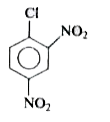Which one of following compounds undergoes EI reaction most readily?
CH3−CH3∣C∣Br−CH2−CH3
CH3−CH2−CH2−Br
CH3−CH2−CH2−I
CH3−CH3∣C∣I−CH2−CH3
The correct Answer is:D
To determine which compound undergoes an E1 reaction most readily, we need to analyze the stability of the carbocations formed during the reaction. The E1 mechanism involves two steps: the formation of a carbocation and then the elimination of a proton to form an alkene.
1. Understanding E1 Mechanism:
- E1 stands for unimolecular elimination. In this mechanism, the first step involves the departure of a leaving group (like a halide) to form a carbocation. The second step involves the removal of a proton by a base, leading to the formation of an alkene.
2. Carbocation Stability:
- The stability of the carbocation is crucial for the E1 reaction. The order of stability for carbocations is:
- Tertiary (3°) > Secondary (2°) > Primary (1°) > Methyl (0°).
- Therefore, the more stable the carbocation, the more readily the E1 reaction will occur.
3. Analyzing the Options:
- We need to evaluate the given compounds (not provided in the question) to determine which one forms the most stable carbocation.
- If options include primary, secondary, and tertiary alkyl halides, we can eliminate primary and secondary options since they form less stable carbocations.
4. Identifying the Best Leaving Group:
- The leaving group also plays a significant role in the rate of carbocation formation. The better the leaving group, the faster the carbocation forms.
- Among halides, the order of leaving group ability is: Iodide (I⁻) > Bromide (Br⁻) > Chloride (Cl⁻) > Fluoride (F⁻).
5. Comparing Compounds:
- If two compounds both form tertiary carbocations, we then compare their leaving groups. The compound with the better leaving group (iodine being the best) will undergo the E1 reaction more readily.
6. Conclusion:
- After analyzing the options, we conclude that the compound that forms the most stable carbocation (preferably a tertiary carbocation) and has the best leaving group (iodine) will undergo the E1 reaction most readily.
Final Answer:
- The compound that undergoes the E1 reaction most readily is the one that forms a tertiary carbocation with iodine as the leaving group.
- E1 stands for unimolecular elimination. In this mechanism, the first step involves the departure of a leaving group (like a halide) to form a carbocation. The second step involves the removal of a proton by a base, leading to the formation of an alkene.
- The stability of the carbocation is crucial for the E1 reaction. The order of stability for carbocations is:
- Tertiary (3°) > Secondary (2°) > Primary (1°) > Methyl (0°).
- Therefore, the more stable the carbocation, the more readily the E1 reaction will occur.
- We need to evaluate the given compounds (not provided in the question) to determine which one forms the most stable carbocation.
- If options include primary, secondary, and tertiary alkyl halides, we can eliminate primary and secondary options since they form less stable carbocations.
- The leaving group also plays a significant role in the rate of carbocation formation. The better the leaving group, the faster the carbocation forms.
- Among halides, the order of leaving group ability is: Iodide (I⁻) > Bromide (Br⁻) > Chloride (Cl⁻) > Fluoride (F⁻).
- If two compounds both form tertiary carbocations, we then compare their leaving groups. The compound with the better leaving group (iodine being the best) will undergo the E1 reaction more readily.
- After analyzing the options, we conclude that the compound that forms the most stable carbocation (preferably a tertiary carbocation) and has the best leaving group (iodine) will undergo the E1 reaction most readily.
- The compound that undergoes the E1 reaction most readily is the one that forms a tertiary carbocation with iodine as the leaving group.
Topper's Solved these Questions
- ORGANIC REACTION MECHANISMS-IVBOOK - RESONANCE ENGLISHCHAPTER - ORGANIC REACTION MECHANISMS-IVEXERCISE - Exercise-2 Part-2
7 Videos
- ORGANIC REACTION MECHANISMS-IVBOOK - RESONANCE ENGLISHCHAPTER - ORGANIC REACTION MECHANISMS-IVEXERCISE - Exercise-2 Part-3
10 Videos
- ORGANIC REACTION MECHANISMS-IVBOOK - RESONANCE ENGLISHCHAPTER - ORGANIC REACTION MECHANISMS-IVEXERCISE - Exercise-1 Part-3
2 Videos
- ORGANIC REACTION MECHANISMS - IIBOOK - RESONANCE ENGLISHCHAPTER - ORGANIC REACTION MECHANISMS - IIEXERCISE - APSP Part - 3
22 Videos
- PERIODIC TABLE & PERIODICITYBOOK - RESONANCE ENGLISHCHAPTER - PERIODIC TABLE & PERIODICITYEXERCISE - ORGANIC CHEMISTRY(BASIC CONCEPTS)
27 Videos
Similar Questions
Knowledge Check
Which one of the following compounds undergoes hydrolysis most readily by aq. NaOH to furnish corresponding phenol ?
A B
B C
C D
D
Which of the following compound undergoes dehydrochlorination most easily when treated with alcoholic KOH ?
ACH3−CH∣CH3−CH2ClBCH3−CH∣CH3−C2H5CCH3−CH2−CH2ClD(CH3)3C−ClWhich one of the following aryl amine undergoes diazotisation most readily ?
A B
B C
C D
D
Which one of the following compounds undergoes predominantly S2N reaction with aqueous NaOH in a polar aprotic solvent ?
View SolutionWhich one of the following compounds is most acidic
View SolutionWhich one of the following compounds is most acidic
View SolutionWhich one of the following compounds will be most readily dehydrated ?
View SolutionThe compound which undergoes Srl reaction most rapidly is :
View Solution
